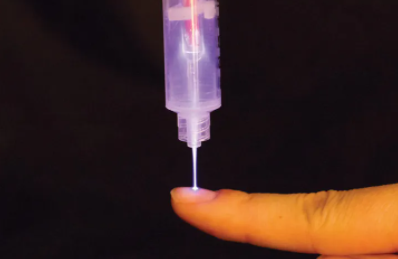Plasma-based treatment goes viral
Dec 7, 2011 @ 15:26
December 5, 2011
Life-threatening viruses such as HIV, SARS, hepatitis and influenza, could soon be combatted in an unusual manner as researchers have demonstrated the effectiveness of plasma for inactivating and preventing the replication of adenoviruses.
When exposed to plasma – the fourth state of matter in addition to solids, liquids and gases – for a period of just 240 seconds, it was found that only one in a million viruses could still replicate – practically all were inactivated.
The study, published in IOP Publishing’s Journal of Physics D: Applied Physics, is one of the first to concentrate specifically on viruses and builds on research that has already shown the usefulness of plasma in eradicating bacteria from skin and sterilising water.
Within a hospital environment, a plasma generating device could realistically rid hands of potentially lethal viruses that relay on a host organism to replicate and spread. In the long-term, plasma could be inhaled directly to treat viruses in the lungs, or applied to blood outside of the body to remove any viruses before transfusion.
The researchers, from the Max-Planck Institut für extraterrestrische Physik and Technische Universität München, specifically chose adenoviruses to examine as they are one of the most difficult viruses to inactivate. Illnesses resulting from this specific virus, for example, can only be managed by treating symptoms and complications of the infection, rather than targeting the actual virus itself.
Adenoviruses predominantly cause respiratory illnesses such as pneumonia and bronchitis and are hard to inactivate as the whole virus is encased in a protein layer, helping it to remain physically stable and tolerate moderate increases in heat and pH.
In this study, the adenoviruses were diluted to specific concentrations and then exposed to plasma for 240 seconds, before being incubated for an hour. A control group of adenoviruses were given the exact same treatment apart from the plasma exposure.
Two separate cell lines were then infected with the two sets of adenoviruses: the ones that were treated with plasma and the control group. To test whether a cell had the virus or not, the researchers programmed the virus to produce a protein that fluoresced green when a specific type of light was shone onto it.
Whilst the exact mechanisms behind the plasma’s impressive effects are relatively unknown, it is thought that they are a result of a combination of reactions between the plasma and surrounding air, which create similar species to the ones found in our own immune system when under microbial attack.
More information: The published version of the paper ‘Effects of cold atmospheric plasmas on adenovirus in solution’ (J L Zimmermann et al 2011 J. Phys. D: Appl. Phys. 44 505201) is available at http://iopscience. … 44/50/505201
Provided by Institute of Physics (news : web)
source : http://www.physorg.com/news/2011-12-plasma-based-treatment-viral.html


